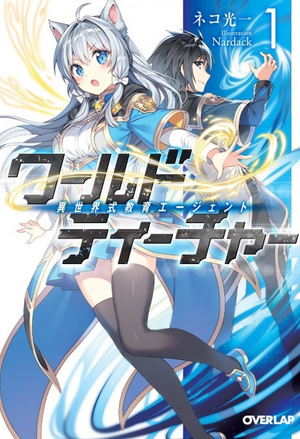Novel Name : The Mech Touch
The Mech Touch Chapter 20: Armor
Ves waited for a long time to receive an armor production license. The good ones cost as least as much as an advanced mech license, but even bargain bin armor cost a pretty penny. Demanding a 100 million bright credits to license a decent armor system was considered reasonable.
Of course, if Ves was really desperate, he could license outdated armor or even stuff that was so old, its owners didn't even bother charging a license for its use.
The latter was useful if Ves made a civilian mech, such as a machine designed to lift containers in warehouses or sow crops in a farm. There was no way he'd ever implement such rotten armor in a combat mech. Any pilot that chose to bring such a poorly armored mech to the battlefield was asking to be sniped in a single shot.
Over the 400-year development cycle of mechs, the components that accompanied their designs also evolved over time. Lasers got more efficient, enabling them to deal more damage with less heat. Ballistic weaponry featured new iterations of propellants and explosives. Energy cells provided more energy to the mech with the implementation of highly energetic fuels and advanced batteries.
In the face of progressing weapons, a mech's armor had to match their pace. There were certain moments in mech history where firepower dominated over that period's armor level. Those were miserable times, where wars caused immense casualties to all the parties involved. In other times when armor easily endured against stagnating weapons, conflicts often dragged on into exhausting wars of attrition, draining much more resources than anticipated.
Only when the level of firepower matched the level of armor could mech battles remain short and limited. More wars started during this period, but they also ended quicker.
"Hopefully the lottery will bring me something average."
Ves had no desire to 'win' another good license. The Caesar Augustus was already bad enough. He did not want to compound his expenses with some kind of super deluxe armor plating that required special machinery to produce.
When the wheel of fortune showed up, Ves let out a relieved breath. "At least it's not the fucking pagoda again."
The only thing Ves had to worry about was getting an awfully cheap armor license. The Caesar Augustus required a certain standard of armor to work. Anything older than last generation was useless in the battlefield. Even certain newer alloys might not work if they aimed at the bottom segment of the market.
"Wish me luck, Lucky."
His gem cat meowed disinterestedly, not even deigning to glance at the holographic prize wheel. Despite his name, Lucky hadn't helped Ves gather much luck so far. He still had his uses though, so Ves just ruffled his cat's head and spun the wheel.
Clacking sounds echoed in the workshop as the wheel's pins clacked against the pointer. Various different plates of armor spun past too quickly for Ves to recognize their names.
After about thirty seconds of solid spinning, the wheel slowed down. Ves was able to read the labels now, but he failed to recognize their brands. "Way too many products are introduced each year. The names don't really matter. I only care about their capabilities."
The wheel dragged its heels for a couple of suspenseful seconds before it stopped. The pointer landed on a grey-ish piece of plate.
[Congratulations! You have received a 10-year production license of the following armor component:
Marlin Solutions 1004-HRF 5th Generation.]
"It looks a little cheap."
All Ves had to say it could be worse. As he studied the armor's specifications and sought more information on the galactic net, he realized his bad luck struck again. At least he hadn't suffered critical damage. The 1004-HRF was actually a bog standard piece of armor. It was also popular, seeing as Marlin opted to renew its formula for five generations. A favorite of small and medium-sized mech manufacturers, the HRF required a complicated manufacturing process to produce decent quality armor plating.
Decent quality for average second-line mechs, like law enforcement or planetary guard regiments. The 5th generation of the HRF thankfully qualified as current generation armor, so its fundamental specs weren't inferior to the mechs his cousin Melinda piloted at the Bentheim Planetary Guard.
The HRF's performance actually featured no unique strong points. Neither did it have any glaring weaknesses. It's main advantage was cost. Its formula used no exotic raw materials, just a large amount of widely available minerals and ingots. The HR in its name stood for highly refined, which meant it took a lot of energy to extract the useful parts of all those materials and combine them into a single plate. Thus, the production of the armor generated a lot of waste products.
Ves' comm unit pinged with the arrival of a new message. Just like with the Caesar Augustus, one of the System's shell companies sent him the production license for the HRF via the galactic net. After combing over the license agreement and finding nothing amiss, he signed it and sent it back to the fake institute. The System would take care of the rest of the paperwork, like registering his license at Marlin Solutions and the local branch of the Mech Trade Association.
He unpacked his virtual box of raw materials next. A huge set of containers got dumped in Ves' storage area, practically filling it up halfway. Opening them to take a look inside revealed neat boxes filled with ingots, minerals and powders.
"Damn. 200 tons should be enough for a couple of mechs with plenty to spare, if I had any other armor license. But the HRF wastes so much input that I'm not even certain I can produce enough plates for two mechs."
If Ves bought the 200 tons from the open market, he'd have to cough up almost twenty million bright credits. Processing them into finished plates of armor used up a lot of energy and a fair amount of time, so Ves also needed to pay tens of thousands of credits in his next electricity bill.
This was also why he appreciated the System's rewards for this mission. The materials gifted to him saved an enormous amount trouble. For most mechs, armor plating cost the most, due to its excessively high material needs. Other components such as the power reactor and engines demanded a lot of precision in its manufacturing, but asked a lot less of its materials. Their main value lay in their sophisticated architecture, which fell under intellectual property that the license already covered.
Ves had checked the price of a 10-year Caesar Augustus production license shortly after he first got it. Such prices weren't made public, so he had to visit a couple of mech fan sites to find a couple of estimates. The license's price supposedly ranged from 500 million to up to 2 billion bright credits.
"Jason stuffed his mech full with goodies from different companies. It's no wonder they all want a piece of the pie when he licenses out his mech."
That was the way business worked. It was extremely fortunate that Ves had earned the licenses through the System. If he had to resort to other means, he might have been forced to sign away his independence. For example, a competing manufacturer might 'lend' his leftover licenses if Ves sold a majority stake of his company's stock.
To any other mech designer, they'd feel fortunate if someone decides to invest in their startups. To someone who has the System like Ves, it'd be satisfying thirst by drinking poison. He refused to be shackled by anyone.
With only about four weeks left until the start of the Young Tigers Exhibition, Ves wanted to complete a viable design that he could show off to the elites attending the event. The manufacture and sale of any model based on the Caesar Augustus was still too difficult for Ves to achieve by himself in the limited time before he had to meet his interest payment.
Even though the base model could still compete with currentgen models, the Caesar Augustus only had a very small circle of customers. It was not viable to produce the mech first and put out a few ads on the galactic net to sell later. It might take years for some random pilot looking to buy a cheap elite mech to stumble upon his work. By then he'd already be bankrupt.
"No. It's better to seek out a customer first. I won't be wasting the remaining half month I have left. I don't want to do a fruitless job manufacturing a mech I'll never earn anything from its sale."
"Hopefully a lot of wealthy people will visit this year's YTE. Anyway, let's not put the cart before the horse. I need to get to work with the new design."
Ves loaded the Mech Designer System's exclusive Designer and looked at his available models. He considered iterating on the Nero Redividus, which would save him a lot of time, or start over from the base model. Both choices had their pros and cons.
"While I'm rather short on time, four weeks should still be plenty. What's more important is that I start designing a variant with the X-Factor in mind from the beginning. If I keep working on the Nero, I'll just muddle it further by blending in different emotions and intents."
He'd certainly be able to design a decent mech, just not one with a strong X-Factor.
"The X-Factor doesn't matter very much if I'm designing a mass production model. But if I want to sell something based off the Caesar Augustus, I need to tailor it to an elite who treasures his mech as a partner. I absolutely can't be casual about this point."
With the base model loaded, Ves wasn't in a hurry to fiddle around. According to his self-made theory about actualizing the X-Factor, the intents of the designer, mech and pilot had to align. This sounded simple, but Ves wasn't designing an original mech. Instead, he adapted from another designer's existing work.
"What really happens to the X-Factor if a mech has multiple designers?"
The Nero Redividus showed that the X-Factor hadn't disappeared from the base model, unlike with the first edition of the Nero. This meant that if the intents and emotions of the two designers overlapped, the X-Factor would be preserved.
This fit in with his theory. But what if he had an opposite intent from the original designer? Say designer 1 has developed a mech design that emphasizes defense. Designer 2 comes along and makes a variant of the design that focuses heavily on offense. Would the opposing intents neutralize themselves, or would designer 2's intentions overwrite designer 1's original imprint? The truth might be a mix of the two, where designer 2's intent becomes predominant but in a diluted form.
"I don't have enough time to experiment with intents."
Ves chose to keep his intent simple, one that did not clash with the base model. "I want a mech that retains its dominance. Though it's too outdated to become a mainstay in a modern battlefield, it can still rule over civilian and mercenary mechs."
A warhorse. An aggressive mech that needs to perform at its best when the pilot needed to show off his prowess. It didn't need to stick around in extended engagements and try to outlast the enemy. It preferred to break through and smash any obstacles in its way.
He already had a name in mind for his new variant. The Marc Antony. A rogue and a bastard, he nonetheless served as a daring cavalry commander under some dude called Julius Caesar. He later became rivals with the guy who eventually got called Caesar Augustus, and died because he wasn't as competent.
"Sucks to be you, but I got to thank you for providing a fitting story to your name."
Marc Antony's history paralleled with how Ves envisioned his mech both in its role and its relation to the base model. The Marc Antony would be a cheaper and less armored version of the Caesar Augustus. It should retain or even expand on the aggressive arrogance of its base model in order to prevent its opponents from exploiting its weaknesses.
Now that Ves formed a strong image of his future design's purpose, he could finally begin working for real this time.
"Let's start with the armor. It's the biggest job by far, and I need to replace the original model's armor wholesale. This is going to take a while."
Of course, if Ves was really desperate, he could license outdated armor or even stuff that was so old, its owners didn't even bother charging a license for its use.
The latter was useful if Ves made a civilian mech, such as a machine designed to lift containers in warehouses or sow crops in a farm. There was no way he'd ever implement such rotten armor in a combat mech. Any pilot that chose to bring such a poorly armored mech to the battlefield was asking to be sniped in a single shot.
Over the 400-year development cycle of mechs, the components that accompanied their designs also evolved over time. Lasers got more efficient, enabling them to deal more damage with less heat. Ballistic weaponry featured new iterations of propellants and explosives. Energy cells provided more energy to the mech with the implementation of highly energetic fuels and advanced batteries.
In the face of progressing weapons, a mech's armor had to match their pace. There were certain moments in mech history where firepower dominated over that period's armor level. Those were miserable times, where wars caused immense casualties to all the parties involved. In other times when armor easily endured against stagnating weapons, conflicts often dragged on into exhausting wars of attrition, draining much more resources than anticipated.
Only when the level of firepower matched the level of armor could mech battles remain short and limited. More wars started during this period, but they also ended quicker.
"Hopefully the lottery will bring me something average."
Ves had no desire to 'win' another good license. The Caesar Augustus was already bad enough. He did not want to compound his expenses with some kind of super deluxe armor plating that required special machinery to produce.
When the wheel of fortune showed up, Ves let out a relieved breath. "At least it's not the fucking pagoda again."
The only thing Ves had to worry about was getting an awfully cheap armor license. The Caesar Augustus required a certain standard of armor to work. Anything older than last generation was useless in the battlefield. Even certain newer alloys might not work if they aimed at the bottom segment of the market.
"Wish me luck, Lucky."
His gem cat meowed disinterestedly, not even deigning to glance at the holographic prize wheel. Despite his name, Lucky hadn't helped Ves gather much luck so far. He still had his uses though, so Ves just ruffled his cat's head and spun the wheel.
Clacking sounds echoed in the workshop as the wheel's pins clacked against the pointer. Various different plates of armor spun past too quickly for Ves to recognize their names.
After about thirty seconds of solid spinning, the wheel slowed down. Ves was able to read the labels now, but he failed to recognize their brands. "Way too many products are introduced each year. The names don't really matter. I only care about their capabilities."
The wheel dragged its heels for a couple of suspenseful seconds before it stopped. The pointer landed on a grey-ish piece of plate.
[Congratulations! You have received a 10-year production license of the following armor component:
Marlin Solutions 1004-HRF 5th Generation.]
"It looks a little cheap."
All Ves had to say it could be worse. As he studied the armor's specifications and sought more information on the galactic net, he realized his bad luck struck again. At least he hadn't suffered critical damage. The 1004-HRF was actually a bog standard piece of armor. It was also popular, seeing as Marlin opted to renew its formula for five generations. A favorite of small and medium-sized mech manufacturers, the HRF required a complicated manufacturing process to produce decent quality armor plating.
Decent quality for average second-line mechs, like law enforcement or planetary guard regiments. The 5th generation of the HRF thankfully qualified as current generation armor, so its fundamental specs weren't inferior to the mechs his cousin Melinda piloted at the Bentheim Planetary Guard.
The HRF's performance actually featured no unique strong points. Neither did it have any glaring weaknesses. It's main advantage was cost. Its formula used no exotic raw materials, just a large amount of widely available minerals and ingots. The HR in its name stood for highly refined, which meant it took a lot of energy to extract the useful parts of all those materials and combine them into a single plate. Thus, the production of the armor generated a lot of waste products.
Ves' comm unit pinged with the arrival of a new message. Just like with the Caesar Augustus, one of the System's shell companies sent him the production license for the HRF via the galactic net. After combing over the license agreement and finding nothing amiss, he signed it and sent it back to the fake institute. The System would take care of the rest of the paperwork, like registering his license at Marlin Solutions and the local branch of the Mech Trade Association.
He unpacked his virtual box of raw materials next. A huge set of containers got dumped in Ves' storage area, practically filling it up halfway. Opening them to take a look inside revealed neat boxes filled with ingots, minerals and powders.
"Damn. 200 tons should be enough for a couple of mechs with plenty to spare, if I had any other armor license. But the HRF wastes so much input that I'm not even certain I can produce enough plates for two mechs."
If Ves bought the 200 tons from the open market, he'd have to cough up almost twenty million bright credits. Processing them into finished plates of armor used up a lot of energy and a fair amount of time, so Ves also needed to pay tens of thousands of credits in his next electricity bill.
This was also why he appreciated the System's rewards for this mission. The materials gifted to him saved an enormous amount trouble. For most mechs, armor plating cost the most, due to its excessively high material needs. Other components such as the power reactor and engines demanded a lot of precision in its manufacturing, but asked a lot less of its materials. Their main value lay in their sophisticated architecture, which fell under intellectual property that the license already covered.
Ves had checked the price of a 10-year Caesar Augustus production license shortly after he first got it. Such prices weren't made public, so he had to visit a couple of mech fan sites to find a couple of estimates. The license's price supposedly ranged from 500 million to up to 2 billion bright credits.
"Jason stuffed his mech full with goodies from different companies. It's no wonder they all want a piece of the pie when he licenses out his mech."
That was the way business worked. It was extremely fortunate that Ves had earned the licenses through the System. If he had to resort to other means, he might have been forced to sign away his independence. For example, a competing manufacturer might 'lend' his leftover licenses if Ves sold a majority stake of his company's stock.
To any other mech designer, they'd feel fortunate if someone decides to invest in their startups. To someone who has the System like Ves, it'd be satisfying thirst by drinking poison. He refused to be shackled by anyone.
With only about four weeks left until the start of the Young Tigers Exhibition, Ves wanted to complete a viable design that he could show off to the elites attending the event. The manufacture and sale of any model based on the Caesar Augustus was still too difficult for Ves to achieve by himself in the limited time before he had to meet his interest payment.
Even though the base model could still compete with currentgen models, the Caesar Augustus only had a very small circle of customers. It was not viable to produce the mech first and put out a few ads on the galactic net to sell later. It might take years for some random pilot looking to buy a cheap elite mech to stumble upon his work. By then he'd already be bankrupt.
"No. It's better to seek out a customer first. I won't be wasting the remaining half month I have left. I don't want to do a fruitless job manufacturing a mech I'll never earn anything from its sale."
"Hopefully a lot of wealthy people will visit this year's YTE. Anyway, let's not put the cart before the horse. I need to get to work with the new design."
Ves loaded the Mech Designer System's exclusive Designer and looked at his available models. He considered iterating on the Nero Redividus, which would save him a lot of time, or start over from the base model. Both choices had their pros and cons.
"While I'm rather short on time, four weeks should still be plenty. What's more important is that I start designing a variant with the X-Factor in mind from the beginning. If I keep working on the Nero, I'll just muddle it further by blending in different emotions and intents."
He'd certainly be able to design a decent mech, just not one with a strong X-Factor.
"The X-Factor doesn't matter very much if I'm designing a mass production model. But if I want to sell something based off the Caesar Augustus, I need to tailor it to an elite who treasures his mech as a partner. I absolutely can't be casual about this point."
With the base model loaded, Ves wasn't in a hurry to fiddle around. According to his self-made theory about actualizing the X-Factor, the intents of the designer, mech and pilot had to align. This sounded simple, but Ves wasn't designing an original mech. Instead, he adapted from another designer's existing work.
"What really happens to the X-Factor if a mech has multiple designers?"
The Nero Redividus showed that the X-Factor hadn't disappeared from the base model, unlike with the first edition of the Nero. This meant that if the intents and emotions of the two designers overlapped, the X-Factor would be preserved.
This fit in with his theory. But what if he had an opposite intent from the original designer? Say designer 1 has developed a mech design that emphasizes defense. Designer 2 comes along and makes a variant of the design that focuses heavily on offense. Would the opposing intents neutralize themselves, or would designer 2's intentions overwrite designer 1's original imprint? The truth might be a mix of the two, where designer 2's intent becomes predominant but in a diluted form.
"I don't have enough time to experiment with intents."
Ves chose to keep his intent simple, one that did not clash with the base model. "I want a mech that retains its dominance. Though it's too outdated to become a mainstay in a modern battlefield, it can still rule over civilian and mercenary mechs."
A warhorse. An aggressive mech that needs to perform at its best when the pilot needed to show off his prowess. It didn't need to stick around in extended engagements and try to outlast the enemy. It preferred to break through and smash any obstacles in its way.
He already had a name in mind for his new variant. The Marc Antony. A rogue and a bastard, he nonetheless served as a daring cavalry commander under some dude called Julius Caesar. He later became rivals with the guy who eventually got called Caesar Augustus, and died because he wasn't as competent.
"Sucks to be you, but I got to thank you for providing a fitting story to your name."
Marc Antony's history paralleled with how Ves envisioned his mech both in its role and its relation to the base model. The Marc Antony would be a cheaper and less armored version of the Caesar Augustus. It should retain or even expand on the aggressive arrogance of its base model in order to prevent its opponents from exploiting its weaknesses.
Now that Ves formed a strong image of his future design's purpose, he could finally begin working for real this time.
"Let's start with the armor. It's the biggest job by far, and I need to replace the original model's armor wholesale. This is going to take a while."
Rankings

To Cure the Playboy
Hailey Allen
Read To Cure the Playboy by Hailey Allen. Genre: Chinese novels. Read the full novel online for free hereRecovering from
Love Has its Will by Selena Lewis
Selena Lewis
Read Love Has its Will by Selena Lewis by Selena Lewis. Genre: Chinese novels. Read the full novel online for free hereT
World Teacher – Other World Style Education & Agent
Neko Kouichi
A man who was once called the world strongest agent ended up becoming a teacher after his retirement to train the new ge
Undefeated God of War
方想
Youth, is meant to be used to shed sweat under the sun!Youth, is to continuously engage in battles, and secure the win!
My Entire Class Was Summoned to Another World except for Me
サザンテラス
A god of a different world had abruptly appeared in my classroom and semi-forcibly summoned the entire class to his worl
I Stayed At Home For A Century, When I Emerged I Was Invincible
Halfway Breeze
Chu Xuan transmigrated to a fantasy world and became the young master of a powerful family. He was rebuked for misbehavi
I'm the King Of Technology
Lumydee
Chu Yi dies in a car crash and becomes Landon Barn, the illegitimate son of king Barn, ruler of Arcadina. Because his mo
Kiss Me Goodnight, Mrs. CEO!
黛蜜儿
In the middle of the night, looking at the woman in his embrace, he smiled devilishly, “With your discontentment, do y
A Man Like None Other
Unknown
Read A Man Like None Other by . Genre: Chinese novels. Read the full novel online for free here.Jared Chance seethes wit
One Useless Rebirth
不会下棋
He Bai won the lottery, became rich, and reached the pinnacle of life. Then, he inadvertently took a picture of the Film